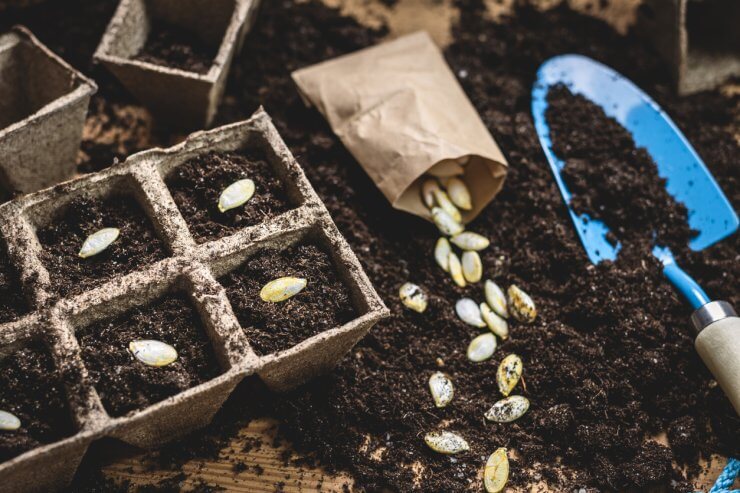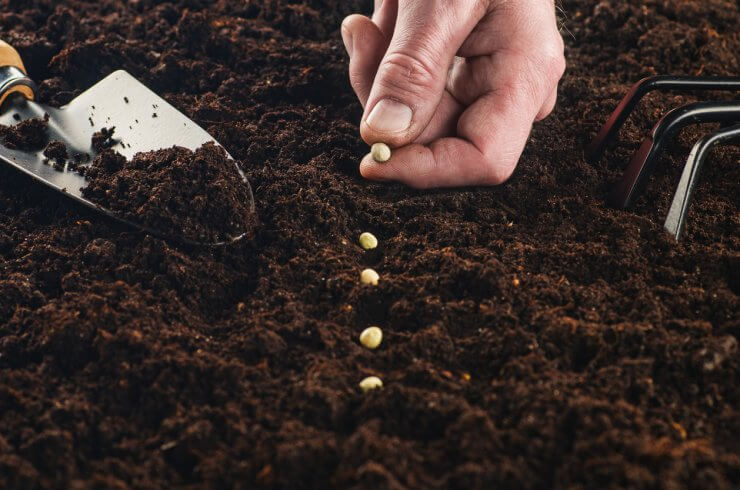
Am I the only gardener who starts selecting seeds for planting the following season before I’ve harvested what’s currently growing? I’m going to guess not. It’s one of the joys of gardening. Sitting with a seed catalog and anticipating all the different possibilities is my adult version of any kid’s trip to the toy store. There’s not a wrong time for looking at seeds, either. In the fall, you can plan ahead for spring. In the winter, you can begin ordering seeds and starting some of them indoors. When spring rolls around, you can begin selecting seeds for planting in late summer, while those summer seeds are perfect for some winter greenhouse crops. But which seeds are the right ones for my garden? Or your garden? Sometimes, there’s more to it than just picking and choosing what looks good, although that’s certainly part of it. Here are some tips to help you decide which heirloom vegetable seeds are ideal for your garden.
Discover 7 top tips for growing, harvesting, and enjoying tomatoes from your home garden—when you access the FREE guide The Best Way to Grow Tomatoes, right now!

What are heirloom vegetables?
Heirloom vegetables have stories. Many of these seeds have been passed down over generations. For example, the Spanish Black Round Radish has been around since the 1500s, and the Nebraska Wedding Tomato has been a traditional wedding gift since the late 1800s. Of course, there’s more to a vegetable than a story, and there is some debate as to what, exactly, qualifies a vegetable as an heirloom. Some growers say any seed more than 50 years old is an heirloom, while others suggest that the timeline goes back to pre-WWII. What we can say for sure is that heirlooms are open-pollinated, meaning they are pollinated by bees, birds, wind, and so on. In addition, heirlooms will grow, generally, true to type, as opposed to hybrids, which may reproduce plants that are very different from the parent plants. Heirloom vegetables are also known for their flavor, and many of them are adapted well to the land where they grow. As an example, Anasazi Sweet Corn is native to the American southwest and, as a result, is drought resistant. So, then, how do you choose which seeds to grow?
Discover 7 ways for successfully selecting seeds for planting
1. Plant what you’ll eat. If you’re growing a food garden, this is one of the most important tips for selecting seeds for planting. As gorgeous as an okra plant is, there’s nothing to be gained from planting it if you don’t like okra. Unless you’re growing it purely for aesthetic reasons, in which case, go for it!
2. Use fresh seeds. If you buy your seeds from a reputable source, this shouldn’t be much of a problem. If you’re a seed saver, however, it’s a good idea to put dates on your seed packets. Some vegetable seeds are only reliable for as little as a year.
3. Shop locally. If you can get your seeds locally, that should generally give you the best chance of selecting varieties that are well-suited to your area. While plenty of hybrid vegetables are bred for things like disease resistance, that’s not the case with heirlooms. Heirloom vegetables rely on adaptation to thrive in any given environment. If you don’t have a good local source for seeds, some excellent online shops include Baker Creek Heirloom Seeds, Seed Savers Exchange, or Victory Seeds.
4. Plant seeds adapted to your region. When you’re selecting seeds for planting, you have a little bit of wiggle room here. We can start seeds indoors, amend the soil, use row covers, and all sorts of other tricks, but if you want to go as low-maintenance as possible, try to stick with regional choices. Hot peppers, for example, tend to grow better in hot climates than in cold regions.
5. Think about your goals. Different types of vegetables, as well as fruits, are often best suited for specific purposes. Certain cucumbers, for instance, are great for pickling, while others, like the Crystal Apple Cucumber, are great for slicing and enjoying in a salad or on their own.
6. Calm yourself down. I might be writing this tip for myself. But it’s easy to go overboard when you’re selecting seeds for planting. I know it’s hard to believe, but you likely don’t need 20 varieties of tomatoes. Okay…. maybe 20 is acceptable. Let’s go with 30. You probably don’t need 30 varieties of tomatoes.
7. Have some fun. Try something new. The great thing about seeds is that they are relatively inexpensive, so in addition to planting vegetables you know you’ll like, take the opportunity to try something new. Ultimately, you can’t go too wrong with an heirloom vegetable garden. You get beautiful plants, tasty veggies, great stories, and the joy of growing some of your own food!
How do you select seeds for an heirloom garden? Is there another tip you might suggest?
Discover 7 top tips for growing, harvesting, and enjoying tomatoes from your home garden—when you access the FREE guide The Best Way to Grow Tomatoes, right now!




